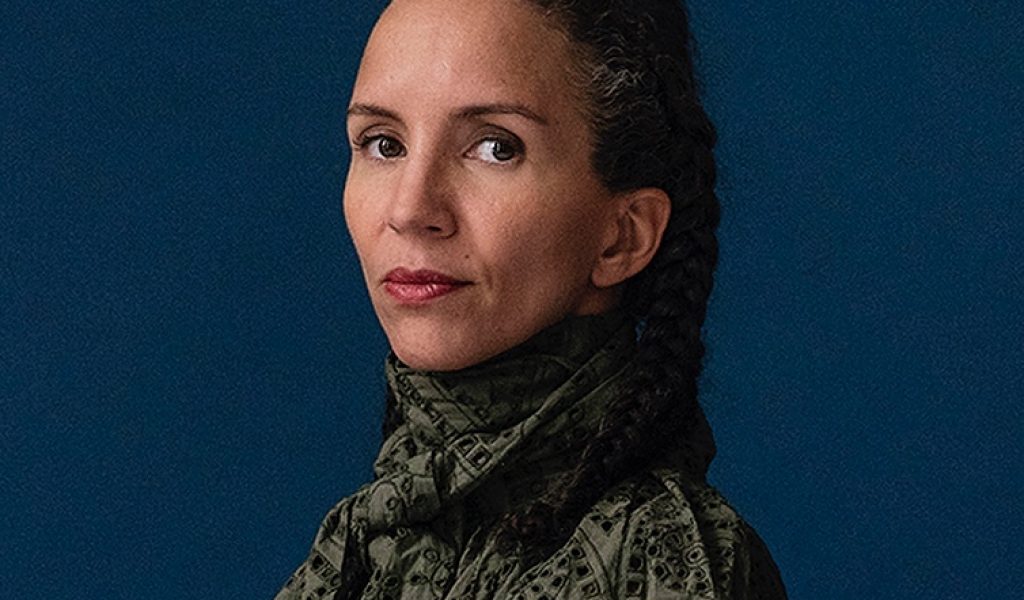Sasha Huber’s “You Name It”: exploring the history of classification and race

Dexter Woolley discusses the background to artist Sasha Huber’s latest exhibition and her pursuit to change the name of the Swiss mountain, Agassizhorn, named after infamous scientist Louis Agassiz.
The earliest known photographs of enslaved people are of Renty Taylor and his daughter, Delia Taylor. The ‘daguerreotypes’, an early form of photography, show the pair in an emaciated condition: face gaunt, eyes haunting, skin scarred. The realism and detail of the images force a confrontation with the relative recency of slavery in American history. The images were commissioned by Swiss American naturalist Louis Agassiz to display the “inferiority of the black race”. Agassiz’s pseudoscientific studies in the field of polygenism sought to construct the “white race” as superior through ‘scientific’ observation and rhetoric. Agassiz left the images to Harvard University, where they have remained since.
Agassiz’s pseudoscientific studies in the field of polygenism, sought to construct the “white race” as superior through ‘scientific’ observation and rhetoric.
In 2019, Taylor’s descendants sued the institution for the return of the images and unspecified damages. Supported by the descendants of Agassiz, Tamara Lanier looks to strip the images of exclusive intellectual property rights and reclaim the dignity of the image’s subjects. In 2021, the Massachusetts Supreme Court dismissed the case. However, as of writing, the case seems to continue as further appeals are brought forth.
Agassiz’s theories of racial difference and white supremacy have obviously been disavowed and disproven by the scientific establishment and, one can hope, society at large. However, Agassiz remains a significant figure in our modern understanding and classification of the natural world. Agassiz’s work in taxonomy and the widespread use of his name for scientific awards, university buildings, and Terrestrial and Planetary nomenclature, means that the naturalist’s influence is still presently felt. The way we write about and experience the natural world continues to be influenced by Agassiz.
Agassiz’s work in taxonomy and the widespread use of his name for scientific awards, university buildings, and Terrestrial and Planetary nomenclature, means that the naturalist’s influence is still presently felt.
Sasha Huber is a Swiss artist, living and working in Helsinki. Born to a Haitian mother and a Swiss father, Huber’s art explores the history of racial classification and the continuing effects of 19th Century scientific racism. Since 2007, Huber has been a part of the project “Demounting Louis Agassiz”: a group concerned with unearthing and redressing the cultural and nominative legacy of Louis Agassiz. “Many people will say that he was simply a product of his times,” says Huber, “But even by those standards, he was extreme. Many of the things he said about race were echoed a century later by Adolf Hitler in Mein Kampf. And yet Agassiz has around 80 places named after him around the world. He even has sites named after him on the moon and Mars. As I learned about him, I felt that as an artist I needed to do more.”
In 2008, Huber landed by helicopter near the peak of the “Agassizhorn”, a mountain in the Swiss Alps named after the naturalist. Recorded and displayed in her exhibition, “You Name It”, Huber hammers a metal plate into the thick snow of the mountain peak. Huber’s plaque symbolically renames the mountain “Rentyhorn” in honour of Renty Taylor and the “men and women who have suffered similar fates”. This political performance/activism, as well as the wider exhibition, explores the effects of categorisation and other post-19th Century episteme have in shaping the modern world.
Recorded and displayed in her exhibition, “You Name It”, Huber hammers a metal plate into the thick snow of the mountain peak.
Huber’s exhibition also includes further reclamations of Taylor’s image in Tailoring Freedom. Stripped naked for J.T. Zealy’s camera, the Taylors are, in Huber’s words, “unclothed, dehumanised and stripped of their dignity”. Thus, printed on wood, Huber reproduces the images of the Taylors. Now, Huber imagines them “dressed” in a fine lace of intricately patterned metal stitching, created using an air pressure staple gun. Huber’s repurposed images seem to explore the violence of American slavery, the influence of European ‘racialisation’, and the relationship we have with our shared history. The imagery of the metal staples, piercing through wood and the black skin that Agassiz objectified and abused, is particularly effective and thought-provoking. Of the stapling process, Huber says “it feels like a weapon and actually sounds like a gun, so in that sense, it’s very charged.” At Rivington Place, an arts centre in Shoreditch, London, attendees can experience Sasha Huber’s challenging work.
Huber’s work provokes questions about how we ‘deal with’ our shared, often ugly, history. How do we confront the pain and suffering inflicted by and upon our ancestors? How, in the present, do we manoeuvre through a world that has been constructed by those of the past?


